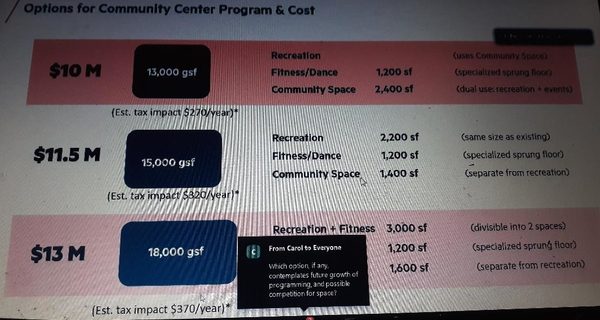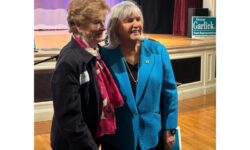By James Kinneen
Hometown Weekly Reporter
Last Tuesday, the Dover Community Center Building Committee met via Zoom to outline the three different options for the new community center: a 13,000 square foot project at a projected total cost of $10m, a 15,000 square foot project at a projected total cost of $11.5m, and an 18,000 square foot project at a total cost of $13m.
To be clear, a decision has not been made yet as to whether there would be a completely new building built or if it would be a renovation project, but both the square footage and the price options pertain to either option.
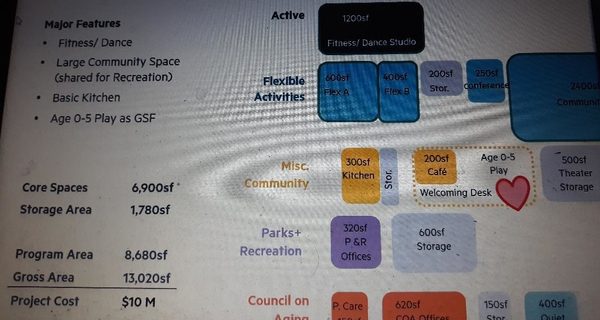
To begin, a slide was shown which used the median Dover household to determine how much tax money each project would cost a average resident. According to their projections, the 13,000 square foot project would add about $270 per year to a residents taxes while the 15,000 option would cost $320 dollars a year, and the 18,000 square foot project would add $370 a year in taxes to what was deemed a typical Dover household. Barry Goldman later responded to a question about how many years that tax increase would apply, by declaring it would last around 20 to 25 years. It was also noted that the prices are “all-in” and include expenses like furniture.
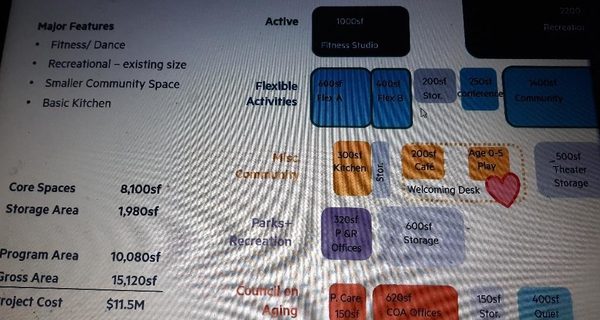
Ford Spalding noted that the largest option (which the Committee recommends) is as large as they are willing to go due to cost, as he had made a pledge not to go over $13m. While he was able to answer a question about going over budget with a firm declaration that “we’re not going to go over budget,” he was unable to answer whether the taxpayer would be paying the entire bill, because the town would be seeking grants and other funds it hoped to receive for the project.
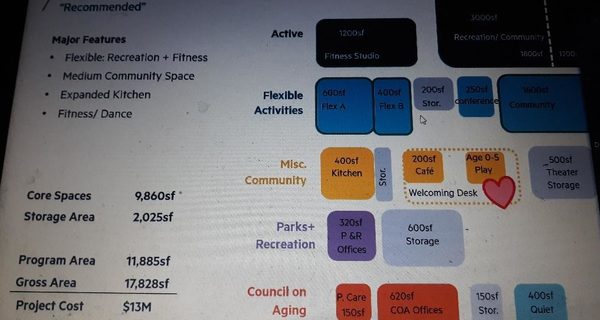
The main difference between the options is recreational space. In the largest option, there is 3,000 square feet of recreation space, while the 15,000 square foot option has 2,200 square feet of recreation space, and in the smallest option recreational activities are held in a community space. To put these numbers in perspective, it was noted that in the middle option, the recreation space is about the size of the Caryl cafeteria, while in the largest option it is the size of the Caryl gymnasium. It was also noted that in the largest option, the 3,000 square feet of recreation space can be cut into 1800 and 1200 foot portions, so that events can be held simultaneously.
As for activities, option three would have a half-court basketball court, although there was some debate in the Zoom chat function whether a tennis court could fit (some argued the roof would be too low). But Spalding was very realistic about expansion. While he left the door open for any add-ons that people wanted - particularly in terms of outdoor space - he made sure it was clear the project needed two thirds of the Town Committee to approve it, before pointing out that after examining neighboring towns, he realized only two towns have full sized gyms - the larger towns of Wellesley and Natick - and that none had a pool or a preschool.
It was also notable how little COVID-19 came up. It seemed odd that when discussing size limitations and maximum occupancies, it wasn't acknowledged that if social distancing proves more the rule than the exception, a larger building would likely be better.
That might come up in the future, as the planning part of the project is far from finished.




